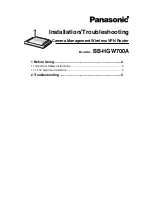
Glossary of Terms
UDS-10 User Guide
11-5
Dialback:
A security feature that ensures people do not log into modems that they shouldn't have access to. When
a connection is requested, the system checks the user name for validity, then "dials back" the number
associated with that user name.
Distributed Processing:
A system in which each computer or node in the network performs its own processing and manages
some of its data while the network facilitates communications between the nodes.
Domain Name:
A domain name is a text name appended to a host name to form a unique host name across internets.
Download:
The transfer of a file or information from one network node to another. Generally refers to transferring
a file from a "big" node, such as a computer, to a "small" node, such as a terminal server or printer.
End Node:
A node such as a PC that can only send and receive information for its own use. It cannot route and
forward information to another node.
Ethernet:
The most popular LAN technology in use today. The IEEE standard 802.3 defines the rules for
configuring an Ethernet network. It is a 10 Mbps, CSMA/CD baseband network that runs over thin
coax, thick coax, twisted pair or fiber optic cable.
FDDI:
Fiberoptic Data Distribution Interface. A cable interface capable of transmitting data at 100 Mbps.
Originally specified for fiber lines, FDDI can also operate over twisted-pair cable for short distances.
Fiber-Optic Cable:
A transmission medium composed of a central glass optical fiber cable surrounded by cladding and an
outer protective sheath. It transmits digital signals in the form of modulated light from a laser or LED
(light-emitting diode).
File Server:
A computer that stores data for network users and provides network access to that data.













































